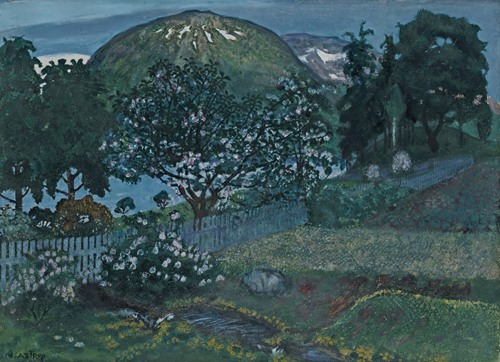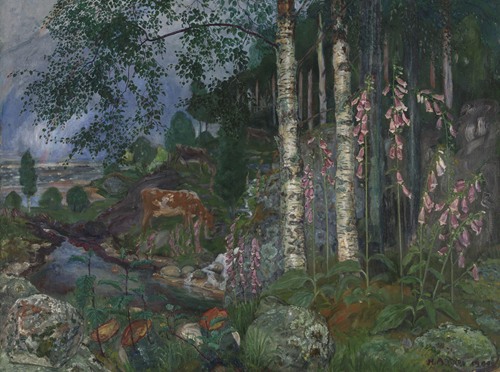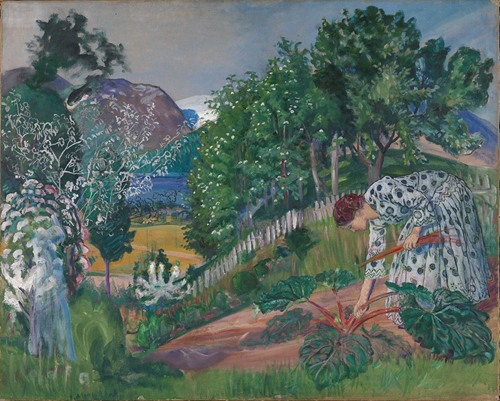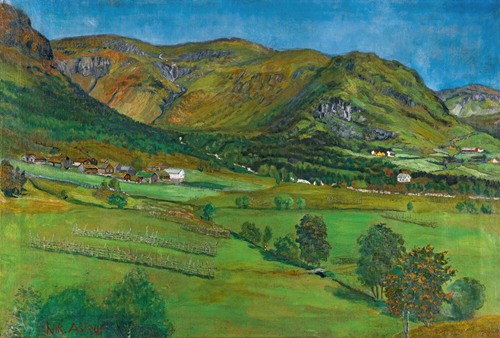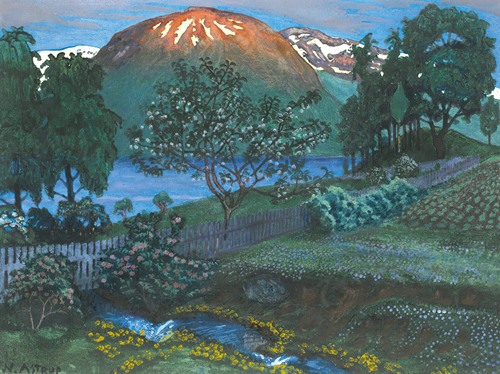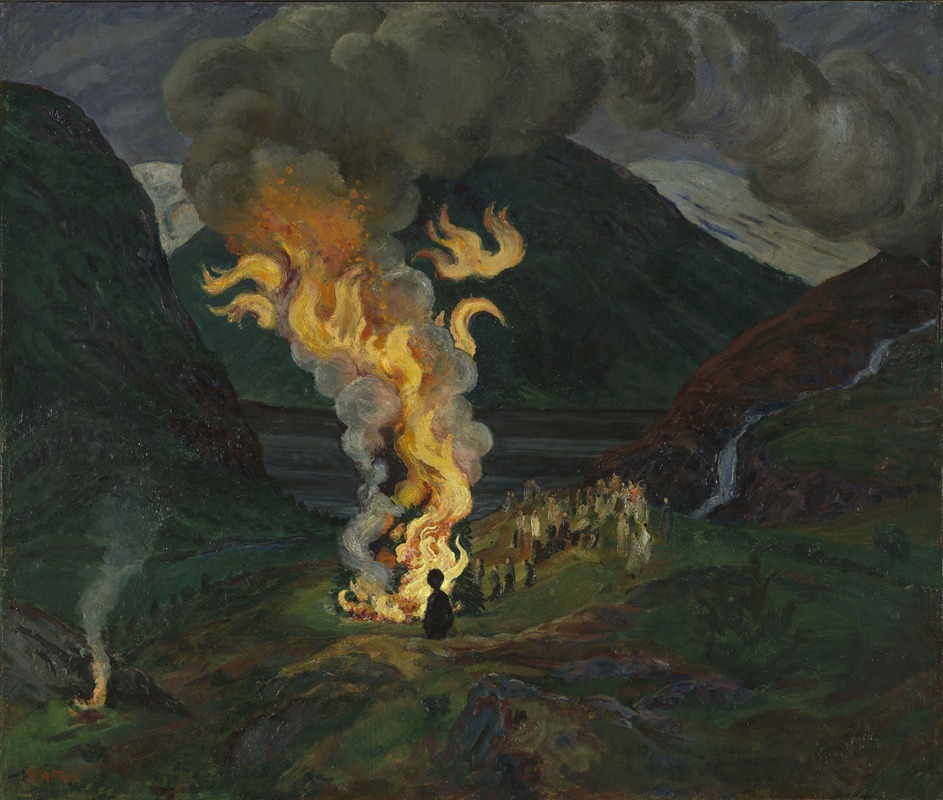

Nikolai Astrup was a Norwegian painter. Astrup was a distinctive, innovative artist noted principally for his intense use of color depicting the lush landscapes of Vestlandet featuring the traditional way of life in the region.
Nikolai Johannes Astrup was born at Bremanger in Sogn og Fjordane, Norway. He grew up in Ålhus in rural Jølster between the Sognefjord and the Nordfjord. He was the eldest son of eleven children born to Christian Astrup (1844–1919) who was a parish priest at Ålhus Church in Jølster. He was the great-grandson of Nils Astrup (1778–1835), a former member of the Norwegian Parliament. His father wanted him to become a priest and sent him to Trondheim Cathedral School from 1895-97. However Astrup was more interested in drawing and painting. In 1899, he left for Kristiania (now Oslo) where he was a student at Harriet Backer's school of painting until 1901. He lived for a while in Paris where he was a student of Christian Krohg at Académie Colarossi from 1901-02. Astrup later traveled to Berlin, Dresden, Munich and Hamburg.
By 1902, he returned to Jølster. He held three significant exhibitions; at Kristiania 1905 and 1911 and at Bergen in 1908. In 1907, he was married to Engel Sunde with whom he had eight children. The household economy was very tight and he struggled with poor health as his asthma was getting worse. In 1913, Astrup settled with his wife and children in Sandalstrand (now Astruptunet) on the south side of Lake Jølstravatn across from the village of Ålhus. He died of pneumonia in 1928 at the age of 47 in the neighbouring municipality Førde.
Astrup preferred clear, strong colors and usually made landscape art depicting his surroundings in Jølster. Having spent the majority of his life in Jølster, the landscape proved a strong influence and through his paintings he sought 'a national "visual language" that evoked the traditions and folklore of his homeland'.
His paintings describe an intimate interaction between nature and the developed environment, characterized by bold lines and distinctive rich color. Astrup is regarded as a neo-romantic painter, but he also worked with woodcuts. Nikolai Astrup is looked upon as one of the greatest Norwegian artists from the early 1900s, and several of his paintings have been sold at auctions for approximately $500,000 USD. Astrup's works have been likened to those of his contemporary Edvard Munch, though Astrup's style has been described as being 'so much brighter – not just in colour, but also in mood'.
Although well known in Norway, Astrup is little-known in the rest of the world. The first exhibition of his work outside of Norway took place at Dulwich Picture Gallery, London from 5 February - 15 May 2016. The exhibition displayed over 90 oil paintings and prints, including works from private collections never exhibited before.
